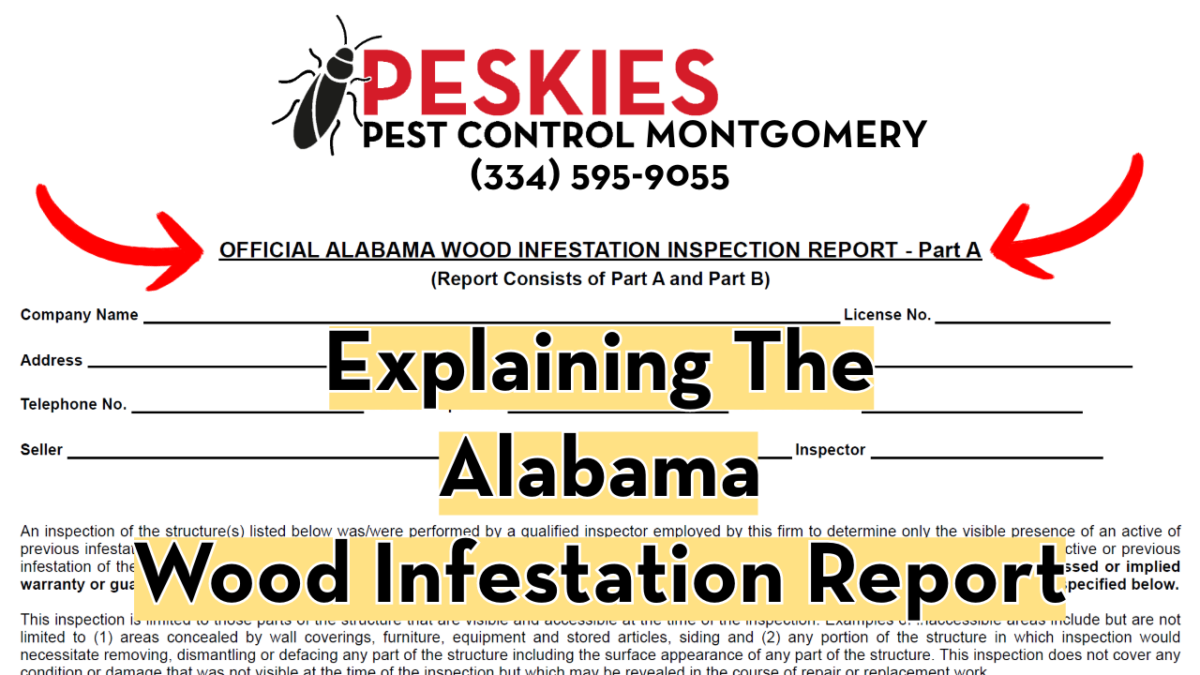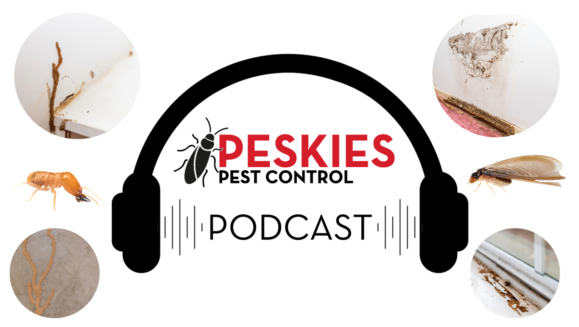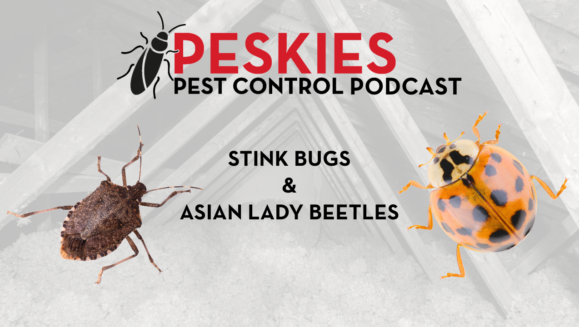Podcast: Play in new window | Download
Subscribe: RSS
Request a Wood Infestation Report (WIR)! Click Here!
Hello and welcome to another edition of the Peskies pest control podcast right here in Montgomery, Alabama, with your host, Travis and Michael. We do this podcast as a community service for the river region. This includes Montgomery, Prattville, Millbrook, Wetumpka, Pike Road, Auburn and any other surrounding areas for people just like you.
Travis McGowin
Hey, thanks for checking out our video today as we wanted to go ahead and take a quick moment to discuss the official Alabama wood infestation inspection report. So what this form is, is for real estate transactions, whether you’re buying or selling a home, whether you’re refinancing a home, most of the time, mortgage lenders are going to require a wood infestation report what infestation reports are done in search of wood destroying organisms that may be affecting the home and this inspection is done so that it can be fully disclosed to the purchaser, as well as the seller. And then that way they can make an informed decision before they actually sign the dotted line and by the house. So as you can see on the this is the very first page of the report, man with the title official Alabama wood infestation inspection report, part A. And it does consist of a Part A and Part B. And then there is a third sheet, which is an addendum, but we’ll show you all that here in just a moment. So the first portion, the top part of part A labels, the company name, license number, address, and all the information for the company as well as the date of inspection and the date of issuance. It also has a spot for the sellers name, purchasers name, and it also list the inspectors name. Now another very important part to this is the scope of inspection. So this actually details what it is that the report encompasses. So you know, it lists out that some portions of the structure may be covered and not visible, list out if there’s any mold like conditions, or there’s concerns about molds and fungi in relation to indoor air quality and that it’s not covered. And then you know, you should have that inspected by someone else who’s certified in that type of inspection. So it’s really important to read the scope of inspection so that you really clearly understand what it is that has been inspected by this report. As you can see here, there’s also a list of the address of the structure and whether this report is only for the main structure itself, or whether it may include you know, some sort of outbuilding shop or shed that you have on the property. And there are some mortgage lenders that will require you to have all of those building inspected, instead of just inspecting the main structure that is for sale on the property. And then there’s also a spot for evidence of previous treatment, which is right here. And that is just going to be up to the inspector to see whether or not they found any evidence such as drill marks around the house bait stations for termites around the house and that sort of thing as well. So moving down to the next section, you have findings. So inspection reveals evidence of subterranean termites, powderpost beetles, wood boring beetles, dry wood, termites, wood, decaying fungi. And you can see there’s checkboxes to mark active or previous infestation. What you can’t see is right here, there’s a section that says remarks and additional findings. This is a spot on a fillable form where the inspector is able to put their remarks, you know, maybe they didn’t wanted to elaborate on something that they found or elaborate on what they checked. And so typically, they’ll type something in or write something in right there. So it’s always a good idea to go ahead and look at that remarks. And additional finding sections just to make sure that the inspector didn’t put something that was you know, very relevant or that might not want to be overlooked by the person who’s buying the house. Directly beneath that, there is a section for treatment. And it shows if any treatment was done on the structure. Now, sometimes this can be done in conjunction with this wood infestation report or it can be done previously well before the wood infestation report was issued. So in this case, the company that’s doing the inspection may have at one point in the past done treatment on this house and this allows them to showcase that to the new buyer. So they may have the above structure was or were treated by this company as follows and they may check this box and then you know they’ll write the date of treatment and the date that the treatment expires on these lines. And they will also note whether or not that is transferable or not transferable to a new property owner when the house is being purchased. And then at the very bottom of that is the last check box which is the above structure is are are not covered under a treatment contract by this company. This is a very important pour Part of this form. And the reason it is is because this tells you whether or not the house you are buying has coverage with the company that is doing the inspection. Now, just because this box is marked, that there is no coverage does not always mean that your house does not have termite coverage, there’s a possibility that your house could have termite coverage by a another company, and that that company is just not the one doing the inspection. But this box will tell you if the inspecting company does have coverage. And if it is marked that it is transferable to the new home buyer, it is a very good idea on your part, to reach out to that company after the closing of your home and ensure that they have updated contact information for you. That is one problem that we do run into occasionally, where contact information for the new homebuyer is not relate to us or to the other company that holds the termite coverage on this house. And if it comes time to renew, and they’re unable to contact you unable to get ahold of you, because they don’t have your proper contact information. And maybe they sent mailers and never heard back from you, then your termite coverage may actually lapse or be canceled altogether, at that time of renewal. So it’s always a great idea to go ahead and reach out to that company after closing, and just update the account information so that they have some sort of contact information for you. So right here, at the very bottom of part A, there’s a buyers signature form. And that, of course, is just going to be where the new buyer signs accepting the results of this report on part A. And then these boxes down here on the bottom are simply checkmarks were the people filling out the report, the company filling out the report can request that copies be sent to either the buyer, the mortgagee, the real estate agent, the seller and as well as the pest control company. So the next page is labeled as Part B. And part B starts off with, of course, showing the address and the date, just to make sure that this report goes along with that same address structure. And these conditions are very important to they kind of spell out a little bit more about what the extent of the report is. So it’s really definitely a great idea to read over these conditions and understand them. So that when you close on the house, let’s just say you close and that very same day, you start to move in and you walk into the house, and then you find something that maybe doesn’t look right to you. It’s a good idea to know what was either a not covered under this inspection that wouldn’t have been listed or be maybe unfortunately, somebody missed something during their inspection that should have been covered. So it’s a good idea to read the conditions governing this report just to ensure that you’re aware of what was covered and what to look for just in case something was missed. A little further down under the conditions governing this report is three checkboxes and it says inspection of accessible areas of this property indicates visible evidence of active or previous infestation as follows. Now this section should go right along with the section from part A, where the inspector was able to mark whether there was an active or previous infestation. So this should mirror whether there was anything found on part A it should mirror on Part B. So the inspector has the opportunity to say that there was evidence observed and that either control measures were performed, or control measures were not performed. And then as well as it should tell you that the evidence of an active or previous infestation exists below. And then they should be able to list that out. Now directly underneath that you see there’s more checkboxes for active and previous. And then it has the five wood destroying organisms that the report looks for. And in these blank lines to the right, the inspector should list a more detailed description of exactly where the wood destroying organism was found. So let’s just say hypothetically that there were subterranean termites found there were active ones, and the company did not provide any control measures. So they would check the boxes up here to mirror that, as well as check active by subterranean termites. And let’s just say for the sake of this video, that the termites were found in a wall, near a window seal in, for example, the living room, so the inspector may list out to the right of subterranean termites. The exact location of the activity, window seal on front side of the house and the living room. May be a little more specific than that. And so they’ll list that out. And directly below that is a diagram. So this diagram will actually give you a visual of where that activity or where that wood destroying organism was found in the structure. So this diagram should have it clearly marked. And then directly below this is a legend, or a key that shows you what the markings mean. So for example, if there were active termites found on that graph, where the termites were found, you should see something like S T, and N A, so that should stand for subterranean termites active. Now, if it was previous damage, you would see S T, with a P for previous subterranean termites previous. And then directly to the right of that key, you’ll see the construction type of the home, whether it has a basement, whether the house is on a slab, or whether the house has a crawlspace. And it does say check all that apply, because we do have some houses that have multiple, if not all three of these items, or construction types. So you may have just a slab checked, or you may have a crawlspace and a slab, or you may have all three. On the bottom of form, Part B is another location for the buyer to sign and date. And then directly beneath that is an authorized agent signature with a date of inspection, then that authorized agent signature is just going to be the inspector signature. And then again, the section that allows them inspector to check where the reports need to be sent or where copies of the reports need to be sent. The very last page which may or may not be included in this report is the wood destroying organism and best station inspection addendum. This is simply an addendum form, we typically do not include it unless there is some sort of change or addendum that needs to be done to the actual initial report itself. And it’ll allow for the inspectors name, date and file number. And then as well as any other relevant information that may need to be added. So let’s just say that the original wood infestation report showed that the house had an active termite infestation. And maybe before closing, the company was asked to treat that, excuse me that termite infestation. So maybe the company would issue a or an addendum, and maybe be able to graph out on the bottom underneath the information portion here and show that they treated. So that’s just a hypothetical as to what can be done with this. But typically, this will not be included unless there’s something additional done after the original inspection was completed. So this was just a overview to tell you kind of what the purpose of the official Alabama would infestation inspection report is, and to give the homeowner, someone who’s buying a home or a business or just any property in general in the state of Alabama, to give you a good idea of what each section means. And to give you a good idea of what you should look for. In terms of reading this report. I always tell my customers and I always tell anybody that asks, Please do not go to the closing table, and just sign the paperwork without reviewing the report. Once you sign this and you close, you’re accepting that report. And you want to make sure that it is acceptable before you sign it and before you close on your house. Know that property. homes and businesses can be the most expensive investment that a person can make. Their home is usually their most expensive investment more than cars or any other items that they may buy. So it is important to make sure that you protect your investment. If you’re dealing with any type of wood destroying organism, whether it’s subterranean termites powderpost beetles, wood boring beetles, dry wood, termites, and even wood destroying fungi. Give us a call at Peskies Pest Control. We’ll be more than happy to help you. You have a question about your wood infestation report or your existing termite coverage. We’re happy to talk about that too. Our Montgomery number is (334) 595-9055 and our Birmingham location is (205) 470-8161. We hope that you found this video helpful and if you have any other questions about this report, give us a call today.


